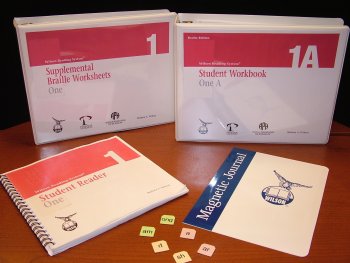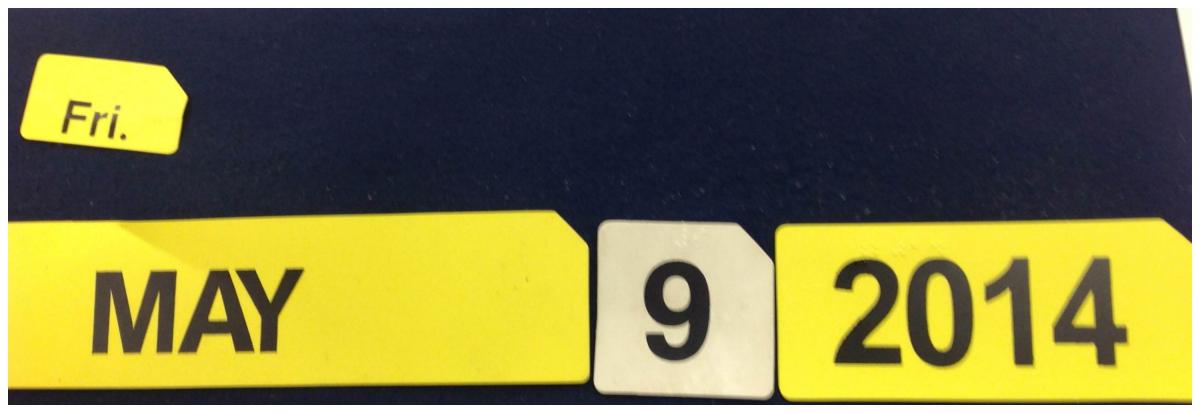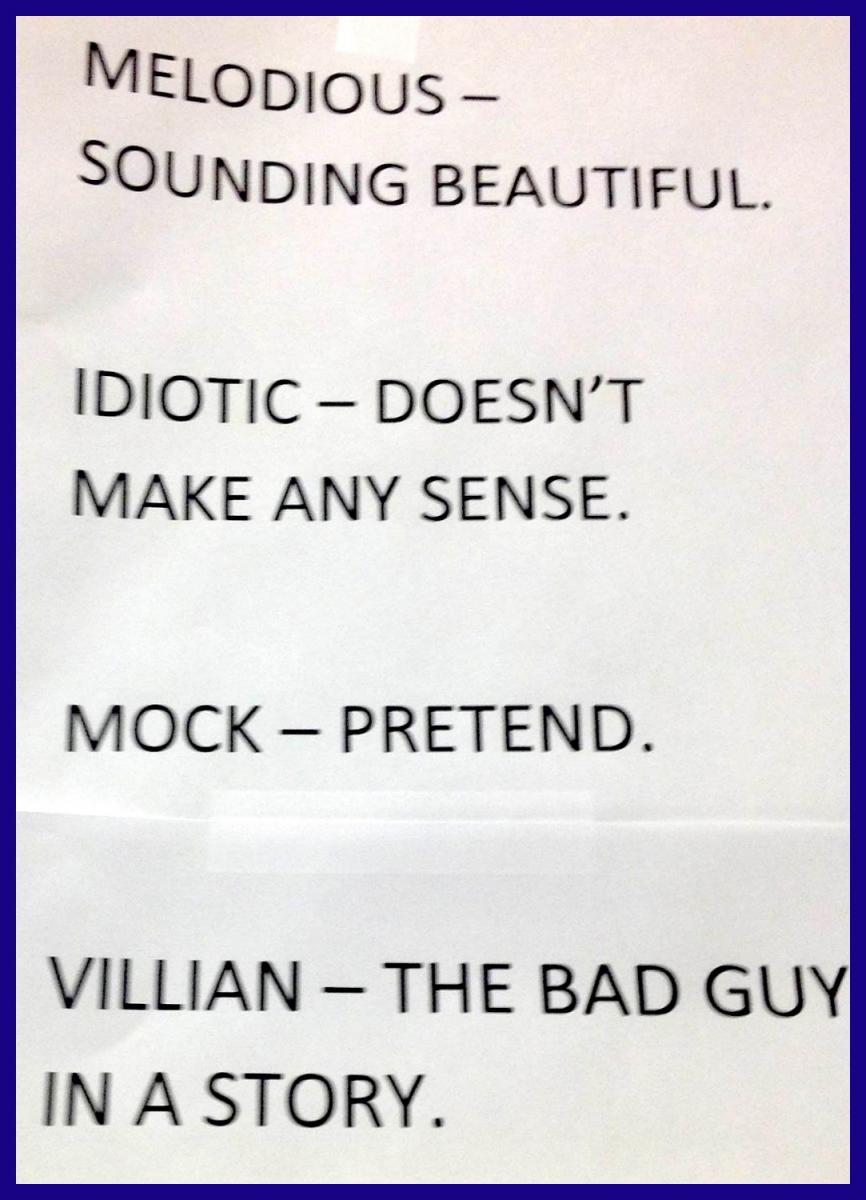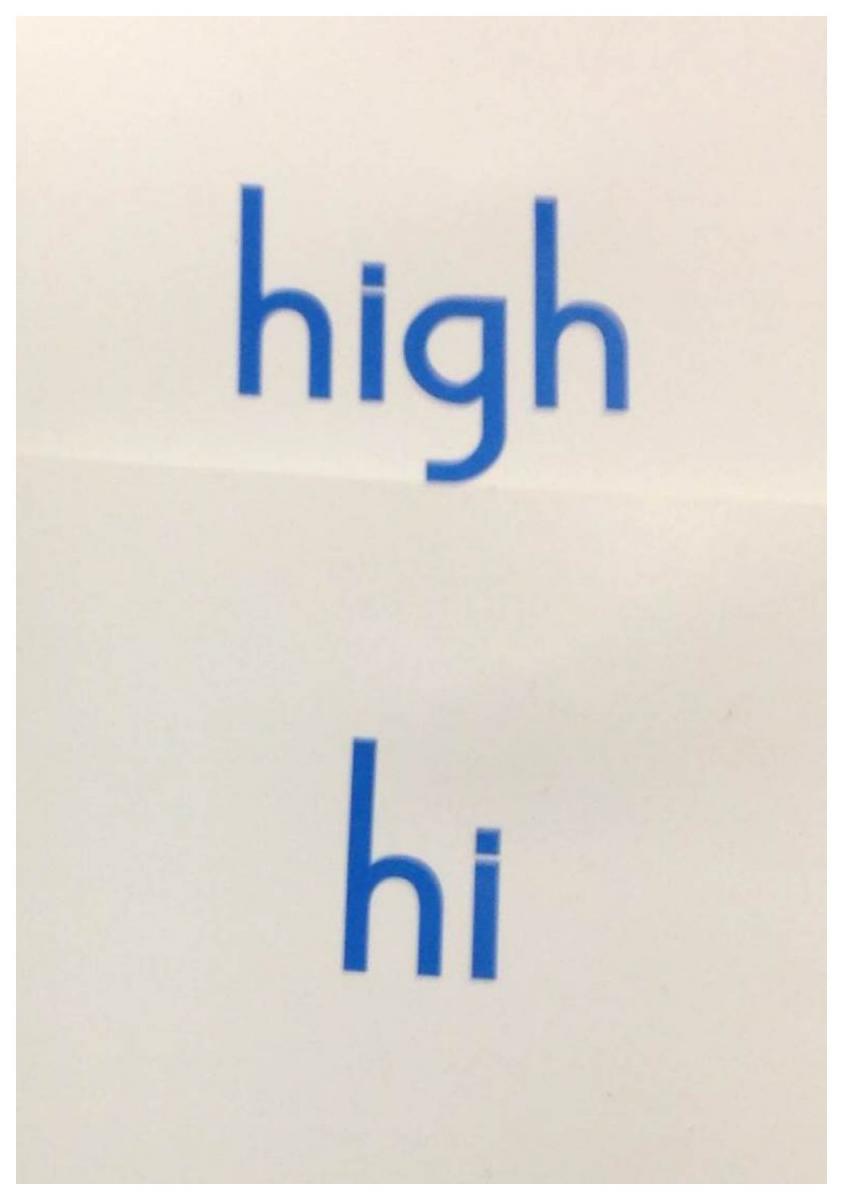Developing Functional Literacy Skills in Older Students
Submitted by Frank Mead on Jul 07, 2014

I have been a teacher in the Secondary Program at the Perkins School for the Blind in Watertown, Massachusetts for more than 30 years, and I am retiring this spring. I was asked to share some of my thoughts and strategies on helping to develop functional literacy skills in students who are blind and slow learners.
Wilson Reading System
The Wilson Reading System was initially developed to assist students who were having difficulty with reading in the primary grades. They were identified as "problem readers" because of the challenge they had in learning to decode. Built  around a series of drills, this system was found to be successful with them. I attended an abridged two-day training in using Wilson and have seen students at all levels make noticeable progress with it.
around a series of drills, this system was found to be successful with them. I attended an abridged two-day training in using Wilson and have seen students at all levels make noticeable progress with it.
 around a series of drills, this system was found to be successful with them. I attended an abridged two-day training in using Wilson and have seen students at all levels make noticeable progress with it.
around a series of drills, this system was found to be successful with them. I attended an abridged two-day training in using Wilson and have seen students at all levels make noticeable progress with it. How does the Wilson Reading System work?
Drills are key in the Wilson Reading System, which goes through the alphabet and teaches students to pronounce different sounds. After initial sounds are mastered, blends and diphthongs are added. A blend is a pair of consonants that make a single sound like “ch” or “st”. Blends can have as many three letters, such as “tch”. Digraphs are similar to blends and the terms are sometimes used interchangeably. Diphthongs are pairs of two vowels, such as “ie” or “ou”. The labels aren't important and students don't necessarily know what they're called, but they are an integral part of the program.
Repeated practice has proven to be the key to interpreting words in Wilson's, and the most important tools in the program are the beginning drills. The program, with its emphasis on phonetic drills, is much the same way that reading used to be taught when I was a child. I love Wilson’s because I have seen results.
Recognizing that students have different types of learning modalities, Wilson tries to address these in the program. Activities incorporate visual, auditory, tactile, and kinesthetic features. For example, there are hand movements and finger exercises as a type of kinesthetic learning. We have Had to adapt, modify, and sometimes eliminate some of these approaches to fit our students' learning styles and impairments.
What type of materials does the Wilson Reading System use?
The materials in this program are self-explanatory. APH (American Printing House for the Blind) now offers a braille version of the Wilson Program, and other teachers at Perkins were involved in the modification and development of this version. There are 12 reading books that are designed for students at different levels. As the levels get higher, the emphasis on writing increases.
Should I use Wilson with every student?
Wilson is not the right system for every student and, in fact, nothing works for every student. However, in my 31 years of teaching, I have had students who are a representative span of the cognitive spectrum and it has worked for all of them. Because I have seen it work with a wide spectrum of students, I am a strong advocate of the program.
 This program is working with students whom many thought would never be readers. They may not necessarily become recreational readers, but they can use the printed word to get through the day. They can use it to develop and interpret schedules, follow recipes, recognise signs within the environment, read notes and cards from family members and friends. They can recognize labeling on packages and read a birthday card. For my students this is primarily what they’re doing. One of my students reads and writes at grade level, but this is not typical of the students I work with.
This program is working with students whom many thought would never be readers. They may not necessarily become recreational readers, but they can use the printed word to get through the day. They can use it to develop and interpret schedules, follow recipes, recognise signs within the environment, read notes and cards from family members and friends. They can recognize labeling on packages and read a birthday card. For my students this is primarily what they’re doing. One of my students reads and writes at grade level, but this is not typical of the students I work with.How do you use this system to teach writing?
I am using this program with one of my students who is on grade level. We use a laptop and iPad for him to write. Handwriting is difficult for him because of his visual impairment. The workbooks have exercises where he has to fill things in, as well as dictations of lists of words and sentences for spelling and punctuation. Creative writing in the Wilson program is limited to developing sentences using new words, although teachers should not feel limited to this.
What other strategies do you use to teaching reading and writing?
I don't believe that anyone is successful in teaching a student to read without adding their own twist to it. All of my students need to understand why they are doing these exercises, and I explain that it helps them to learn to interpret their world. For example, I begin by giving them their schedules in print, rather than tactile schedules, with the days of the week and times. This is a nice way to introduce reading, because it correlates to their own experiences and is functional. This is even more critical because of their visual impairment. I begin by teaching them to use their skills to read a single word, and from there we move to simple phrases, short sentences, and then progress to brief narratives.
School Newsletter
Another way we incorporate literacy into our routine is to read the daily notices and weekly newsletters at school. These are all about the students’ lives and have a direct impact on them. They include birthdays, off-campus trips, who is leaving early, and other announcements. The secretary compiles these, and the students can report to the secretary on a regular basis. A daily notice and weekly newsletter give the student a meaningful tool to practice reading in a way that is motivating and extremely useful to them. If they do this on a daily basis and they read about something that later happens, they start to understand the relevance and importance of reading.
Taking Dictation from Students
I believe that there is tremendous value in teachers taking dictation from the students. This can be a very positive experience for them, especially for those who are lower functioning. We have students dictate notes in their daily logs on a regular basis. I am interested in developing in the students (especially those who are reluctant communicators) the sense that what they have to say is of value. Once they feel this, then they communicate more willingly. A teacher writing down what the student says is a type of empowerment. After a student dictates a note, I might say, “I want you all to listen to Rebecca”. I don't add anything of substance to the narrative, but I do clean it up. If they use the wrong tense or wrong personal pronoun, I correct them in the writing, but don't interrupt them as they're speaking. Sometimes the parents will write or email me what they did on the weekend and even create journals of what they did on vacation or on summer vacation. This information lets me kno how I can lead a discussion or narrative to draw out relevant information.
Progress is often slow and results don't happen right away. Many of these students are adolescents, where it has been embedded in their psyche that they don't have any thing to say. We create a format for conversation using newsletters, daily logs, and more. If you start this in September, don't expect that you will have remarkable progress in January. This takes a long time, but don't give up! I have never had a student where there wasn’t at least some progress made.
Building Vocabulary
The more I can teach my students about the world and how to express themselves, the better the chances are that people will demonstrate an appropriate level of response to them. We have a weekly vocabulary list that usually is made up of  words that came up during the previous week. I ask them what something means and if they don't know a word, we add it to the week’s list. Because the list develops naturally, it has more meaning and relevance to them.
words that came up during the previous week. I ask them what something means and if they don't know a word, we add it to the week’s list. Because the list develops naturally, it has more meaning and relevance to them.
 words that came up during the previous week. I ask them what something means and if they don't know a word, we add it to the week’s list. Because the list develops naturally, it has more meaning and relevance to them.
words that came up during the previous week. I ask them what something means and if they don't know a word, we add it to the week’s list. Because the list develops naturally, it has more meaning and relevance to them.
I develop my own definitions because they are more meaningful and are at the student’s level. We spend a full week reviewing and practicing the vocabulary in context. For example, this week “melodious” was one of our vocabulary words and we talked about the spring concert. Other words this past week were “temporary” and “mock”.
On Friday we have an oral quiz. I see the look on people's faces when one of my students says, "We have a conundrum". The use of this level of vocabulary significantly shifts perceptions in a subtle but real way. People recognize that this is a kid who has more than you see on the surface; they have learned and are capable of learning more.
Teaching Idioms
I also teach students the meaning of common idioms. They each choose an idiom from the “idiom jar”. We read the idiom and use it in a sentence. I ask them to guess and see if they know what it means. If one person knows it, but the others don't, I still use it. We have a weekly idiom quiz on Fridays. Recent examples of idioms include: “Call it a day”, “Dress to the nines”, “Straighten up and fly right”, “Dog’s life”, “Driving me up a wall”, and “Raining cats and dogs”. I try to make it fun.
Homonyms
 We also practice homonyms every week. There is one homonym pair per week. Students have to use them in a sentence, so that they know "which" is "which". (Which is witch?) This week they learned the difference between “hi” and “high”. Being silly and playful helps them to have fun and to remember. It relaxes them to learn this way. I always look for those opportunities during the week to interject the idioms and homonyms that we have been practicing. The more naturally occurring opportunities there are to practice, the more firmly they remember and utilize their skills.
We also practice homonyms every week. There is one homonym pair per week. Students have to use them in a sentence, so that they know "which" is "which". (Which is witch?) This week they learned the difference between “hi” and “high”. Being silly and playful helps them to have fun and to remember. It relaxes them to learn this way. I always look for those opportunities during the week to interject the idioms and homonyms that we have been practicing. The more naturally occurring opportunities there are to practice, the more firmly they remember and utilize their skills.Conclusion
Sometimes people ask why I bother to teach skills to my students that have little or no functional applications. You never ask a high school student why they are learning about the French Revolution; we assume that knowledge for its own sake is sufficient purpose. The more knowledge you have about the world around you, the more interesting your life is going to be. If you don't know anything about a given subject, but you start to learn about the topic, it becomes more interesting. The more our students learn, the richer their lives will be to them. That’s what education is all about.

